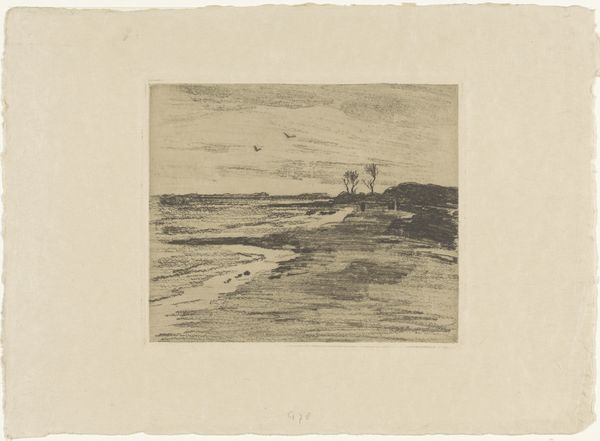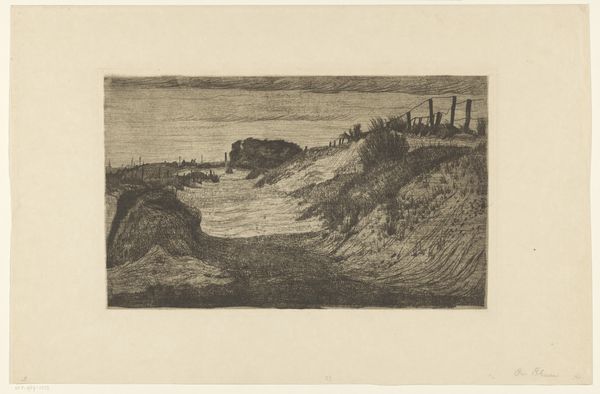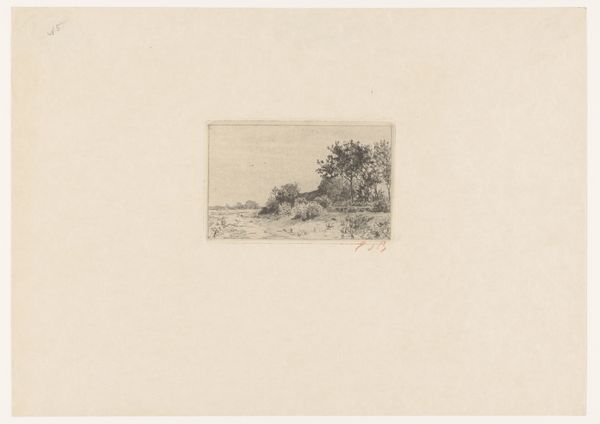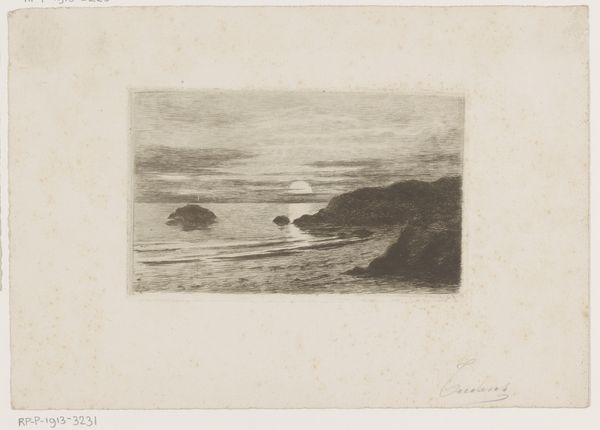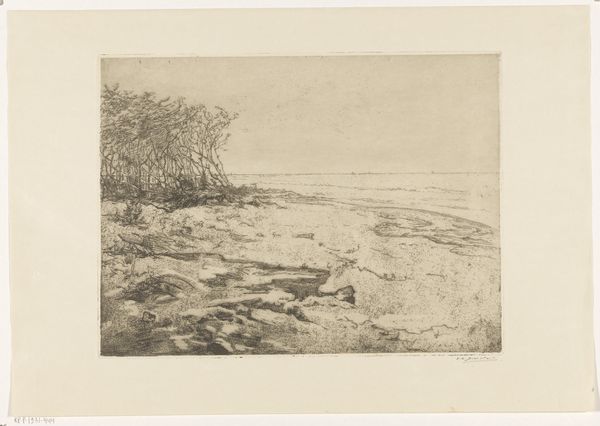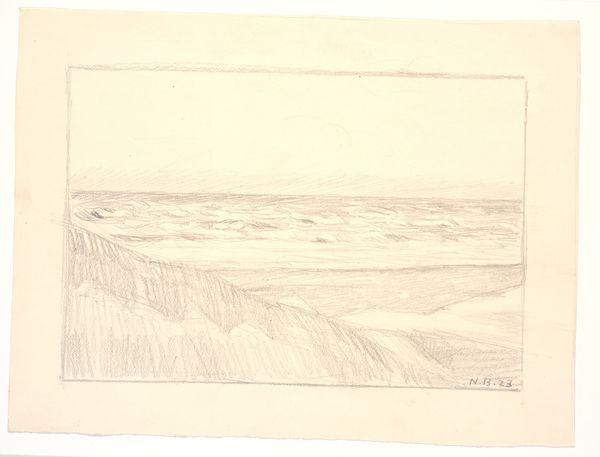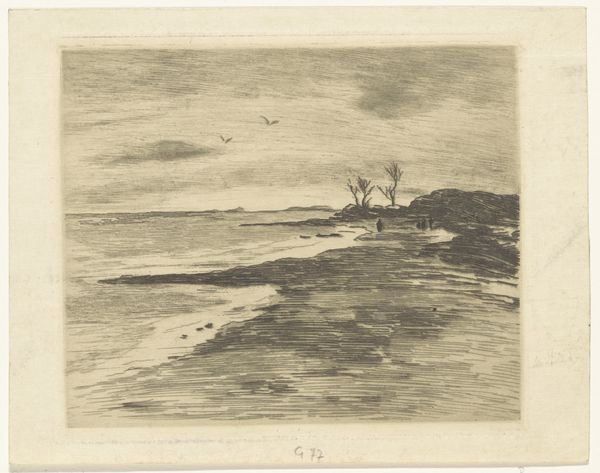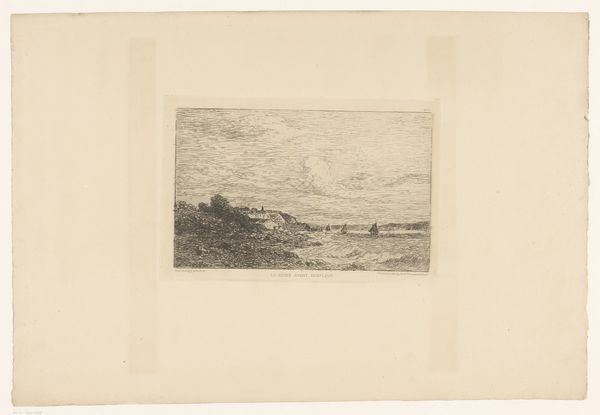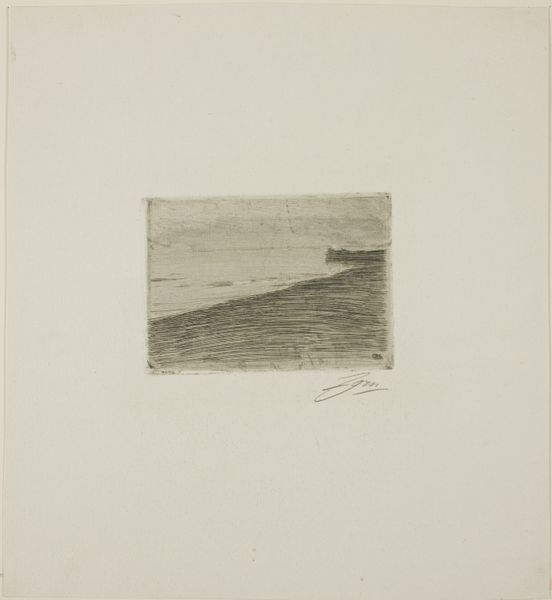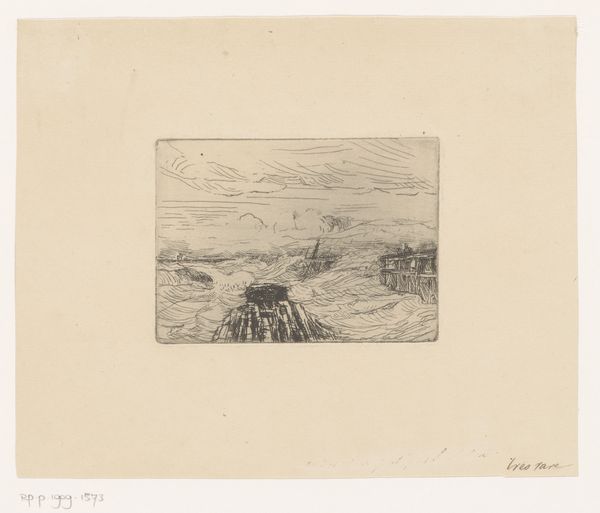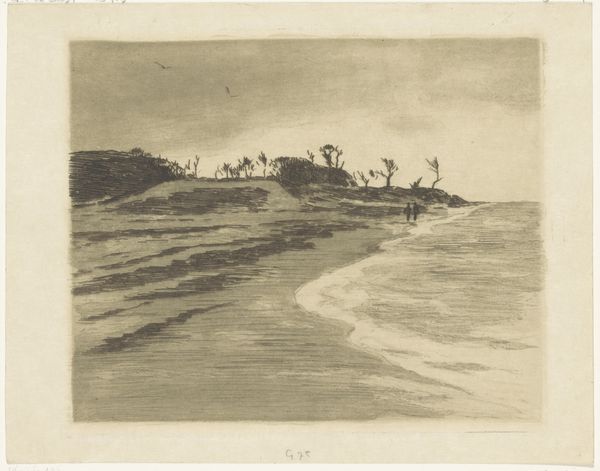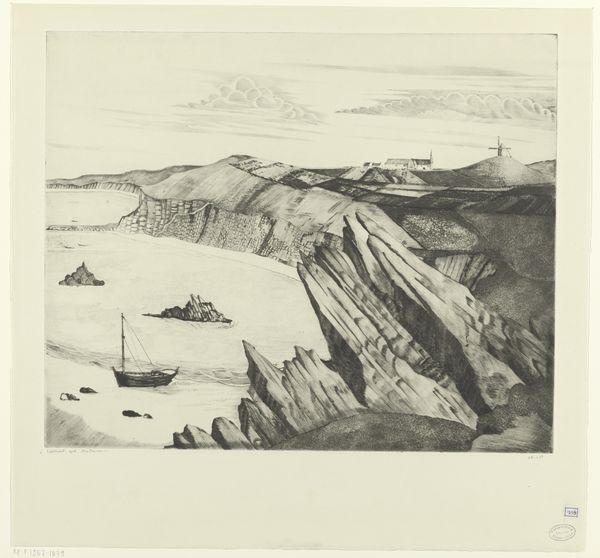
print, etching
# print
#
etching
#
landscape
#
etching
#
realism
Dimensions: height 249 mm, width 297 mm
Copyright: Rijks Museum: Open Domain
Curator: Looking at this print, "Eenzaamheid bij Soest", etched by Gerrit Haverkamp sometime between 1882 and 1926, what springs to mind? Editor: Bleakness. It’s all muted tones, etched so finely it almost disappears. A flat landscape, punctuated by a scrubby dune, speaks of desolation, even in the depiction of nature. Curator: The title translates to “Loneliness near Soest”, a town in the Netherlands. Haverkamp seems to tap into a growing interest in depictions of modern solitude and isolation prevalent in much late 19th-century art, particularly after industrialization had swept over the landscape. The print's subtle, almost invisible quality hints at this quiet despair. Editor: The almost desolate character really resonates. We see this barren dune, sparsely vegetated, casting long shadows and juxtaposed to a skeletal tree... it conjures familiar symbols for life and death that remind us of the passing of time and unavoidable mortality. Does it connect to the social and institutional concerns you’ve noted? Curator: Absolutely. As industrialization intensified, we observe more individualized responses that seem rooted in fear and uncertainty. What you identify in the stark symbols aligns with an artistic and literary exploration of subjective feelings within that broad, changing historical period. Consider the growth of psychiatric thought at the same time: art turned to mapping inner, intangible states of mind, the social space reduced to the individual. Editor: It makes sense to contextualize that experience within a wider social anxiety; otherwise, the work feels narrowly psychological, where the lonely figure symbolizes nothing beyond themselves. Haverkamp and his contemporaries weren't operating in a vacuum. Curator: Precisely, and seeing this “loneliness” through a socio-political lens gives his work greater importance beyond being merely personal expression. Editor: I will walk away from this exhibition now considering how societal change is symbolized in Haverkamp's imagery and also how our view of individual emotional states has transformed since Haverkamp’s time. Curator: I agree. It's the play between personal feeling and social context that makes this unassuming little etching speak to us across a century.
Comments
No comments
Be the first to comment and join the conversation on the ultimate creative platform.
